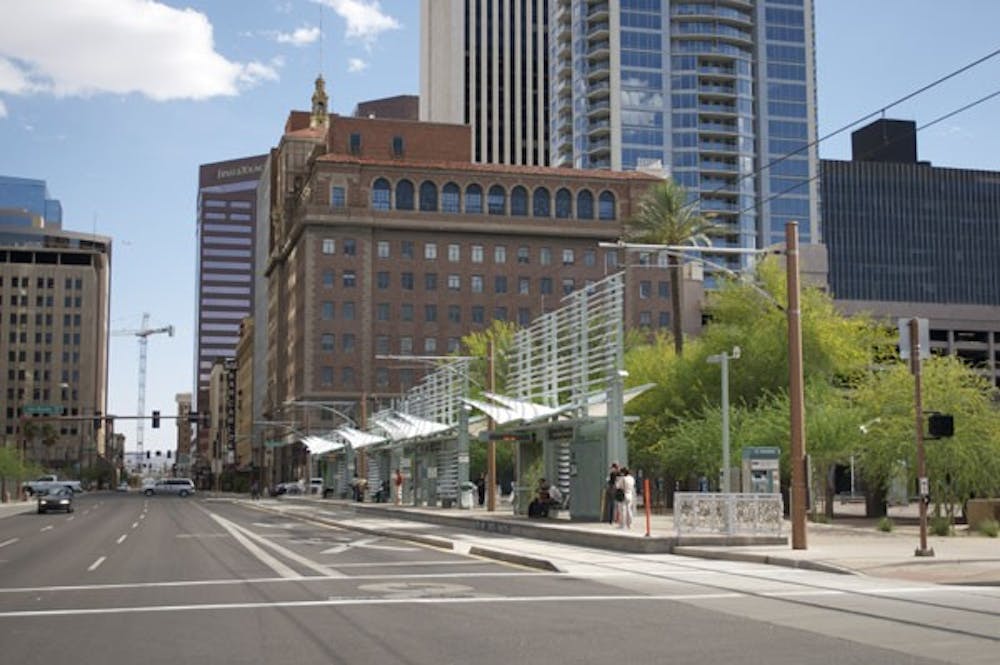In partnership with the city of Phoenix, ASU has received a $25 million grant to improve energy efficiency as part of a larger “Green Phoenix” project.
“Green Phoenix is a concept that the University developed for and with the city of Phoenix … to determine what are the activities and programs and policies that the city could put in place that would make it the greenest city in America,” said Rob Melnick, executive dean at ASU’s Global Institute of Sustainability.
Green Phoenix is a 17-point plan, with the $25 million to go toward implementing one of these points.
“We proposed to make a portion of the city, along what we call the ‘Green Rail Corridor,’ particularly energy efficient and use that as a model for the rest of the city,” Melnick said.
He added that although the University asked for more money, the amount received will go a long way.
“It will allow us to retrofit and create energy efficiency in approximately 30 million square feet of business space
and to go into hundreds, possibly thousands of homes,” he said.
The results will be environmentally sound, as well as financially sustainable.
“When you reduce energy, you save money. The cost savings captured in this program can in some ways be returned back into the community,” Melnick said.
He hopes for what he called a “lighthouse effect.”
“Other businesses who see what we are doing, maybe without our help, will understand what they can do on their own time or money to improve energy efficiency,” he said.
The land was chosen along the light rail tracks to give maximum exposure to the methods the project will use.
“It’s not just the people that live and work in the corridor who will be exposed to the energy savings and public information, but also everyone who goes through the corridor on a train,” Melnick said. “We are going to make public evidence about what the benefits are of energy efficiency the way we have done it.”
The project is part of a University-wide effort to be seen as a leader in sustainability.
“The University has quite a large carbon footprint, largely because we are large, have a lot of students [and] a lot of research going on. Yet it is really important to be cognizant of the impact these activities have,” said Bonny Bentzin, director of University Sustainability Practices.
She noted that reducing energy use could be a financial windfall for a University that could use an influx of extra money.
“We can reduce our consumption by about 35 percent. Of that, about 10 percent is human behavior … and could save around $3 million,” Bentzin said.
Like Melnick, she emphasized the larger effects of a little action.
“It’s important because what ASU does can have an impact on the world … we can influence the market by the products we buy and how we function,” she said.
Reach the reporter at dana.sheaff@asu.edu





